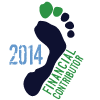So I replied: Dr., first,
So I replied:
Dr., first, let’s tackle this comment “You can’t just blame shoes. Foot deformities and certain sports/injuries can be blamed as well.” I agree. But tell me, what component do most if not all of your patients have in common when they come to see you for their foot deformities (barring birth defects) and injuries? Shoes.
You really should do some research about the surfaces that cover various, entire regions of the earth. I was completely surprised when I learned what our predecessors/ancestors used to run and walk on. Humans have traversed much harder surfaces than what we walk and run across today. The manmade surfaces of today are much more barefoot-friendly than some of the textures our species use to travel over. Don’t forget about lava, stone, unbroken plates of granite, and the desert floor, miles and miles of it. But we managed to do it, and we did it barefoot.
Getting a disease from the ground is a very, very rare thing, and I can point you to many who have done exhaustive research in this area to settle your concerns if you wish.
About the harder, flatter manmade surfaces you are referring to versus the soft, cushiony running shoes adopted by so many today and supported by the medical community: a study was conducted by Dr. Daniel Lieberman, PhD, at Harvard, and others called “Foot strike patterns and collision forces in habitually barefoot versus shod runners” and was published in the Nature Journal. (Lieberman DE, Venkadesan M, Werbel WA, Daoud AI, D’Andrea S, Davis IS, Mang’eni RO, Pitsiladis Y. (2010) Foot strike patterns and collision forces in habitually barefoot versus shod runners. Nature 463: 531-5.) Here’s the link exposed:
http://www.barefootrunning.fas.harvard.edu/Nature2010_FootStrikePatternsandCollisionForces.pdf
Here is a summary of their findings: Our research asked how and why humans can and did run comfortably without modern running shoes. We tested and confirmed what many people knew already: that most experienced, habitually barefoot runners tend to avoid landing on the heel and instead land with a forefoot or midfoot strike. The bulk of our published research explores the collisional mechanics of different kinds of foot strikes. We show that most forefoot and some midfoot strikes (shod or barefoot) do not generate the sudden, large impact transients that occur when you heel strike (shod or barefoot). Consequently, runners who forefoot or midfoot strike do not need shoes with elevated cushioned heels to cope with these sudden, high transient forces that occur when you land on the ground. Therefore, barefoot and minimally shod people can run easily on the hardest surfaces in the world without discomfort from landing. If impact transient forces contribute to some forms of injury, then this style of running (shod or barefoot) might have some benefits, but that hypothesis remains to be tested.
Now why do you suppose that is? Not only does our gait change to a natural stride (non heel-striking) reducing the impact forces traveling up our bodies, but when we remove shoes with elevated heels and cushioning, we also instinctively know to step lightly when traversing difficult or rough terrain (manmade or natural). Studies show that when we are wearing shoes, we lose our ability to gauge feedback from the ground, our proprioception is compromised. In fact, you don’t even need a study to tell you this. We bolt down the road or across the trail without concern for the shock forces now traveling up our bodies, through our feet, legs, hips, spine, and necks.
Try this tonight (or at least imagine it). I’m guessing you live near an asphalt street, yes? With your shoes on, run a good 1/8 of a mile and give it your all; after all, you’ll tend to believe the shoes will protect you, the shoes will do all the work for you, and you may not even know there is a problem developing as the injury(ies) may be cumulative. Then do the same thing barefoot, giving it your all. Not only will you find that your instincts will kick in, and you step more lightly, but if you heel-striked in those shoes previously (as most runners do, not all), you have a good chance of being one of the majority who stop heel-striking the moment the shoes are taken off.
There’s a whole lot more to our sport than what most doctors understand, which is a shame, really.
But don’t worry. We don’t predict the shoe revolution dying out anytime soon, so you’ll have lots of business from your shoe-wearing patients.
One favor though, please? When a runner comes to you and says they were injured while running barefoot in their Vibram FiveFinger toe gloves (“barefoot shoes&rdquo

, please make the distinction and tell them they were actually running shod. It will be a very, very rare occasion when you actually do treat a true barefoot runner.
Read more:
http://naturallyengineered.com/blog/free-your-feet-barefoot-running-infographic/#ixzz1jkw7wz5w












